Lamborghini Huracán STO
As the successor to the Huracán Performante, Lamborghini presents the even wilder Huracán STO. The abbreviation stands for Super Trofeo Omologato. This also makes it clear which vehicles served as a source of inspiration. Various experiences from the in-house racing department Squadra Corse with the brand one-make cup Super Trofeo and the GT3 racing cars in series all around the world flowed into this new supercar. Among other things, the Huracán GT3 Evo has already won the 24 Hours of Daytona three times and the 12 Hours of Sebring twice.
Less torque than the Huracán Evo
Compared to the normal Huracán Evo, the STO surprisingly receives no increase in performance. The 5.2-liter V10 engine delivers 470 kW/640 hp and delivers 565 newtonmeters of torque via the crankshaft to the drive shafts. This is 35 newtonmeters less than in the Huracán Evo. The reason for this is that the STO has only rear-wheel drive instead of four-wheel drive. Power transmission is provided by the familiar seven-speed dual-clutch gearbox, whose shifting times have been shortened. Despite the pure rear-wheel drive, the rear-wheel steering remains, which supports the normal steering in all speed ranges and makes the car even more agile. Lamborghini states a topspeed of 340 kph (211 mph). The sprint to 100 kph (62 mph) under ideal conditions is over in three, the sprint to 200 kph (124 mph) in nine seconds. Bridgestone Potenza tires are available in two versions for the magnesium rims.




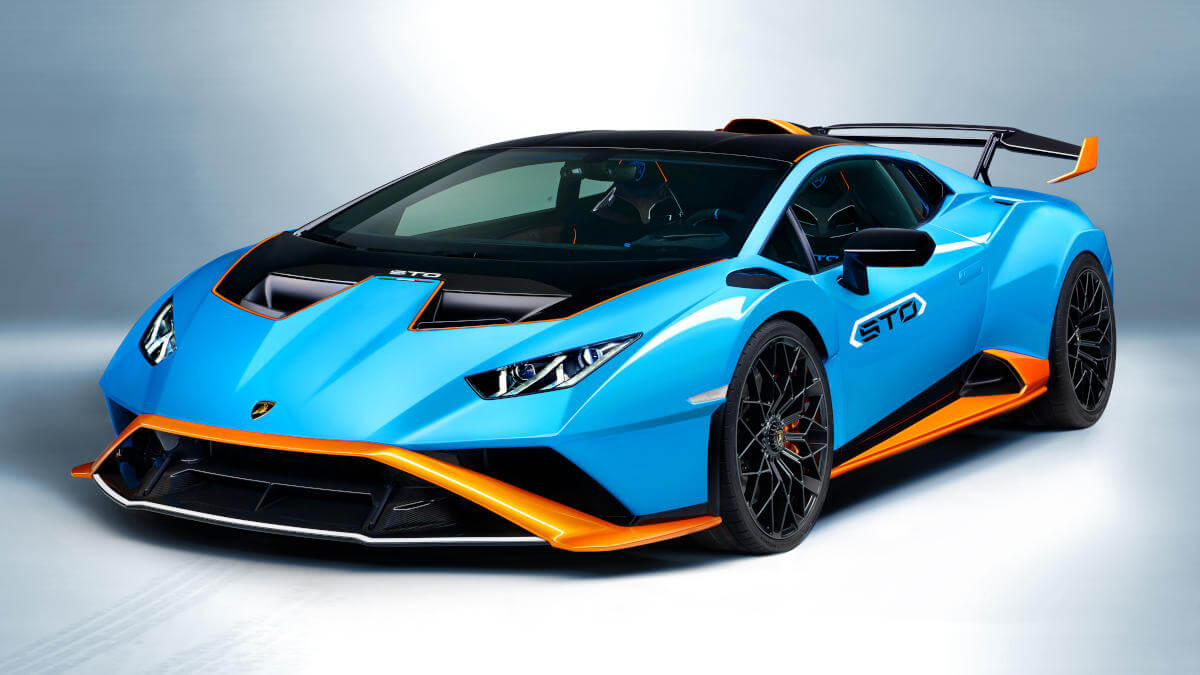



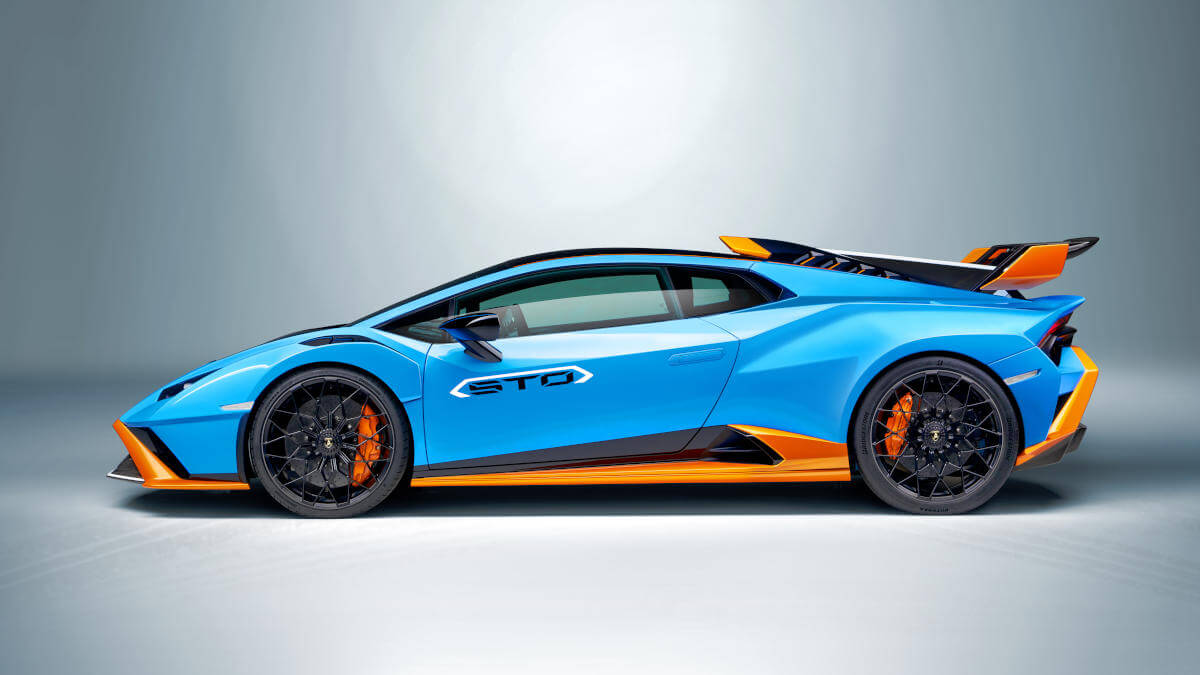



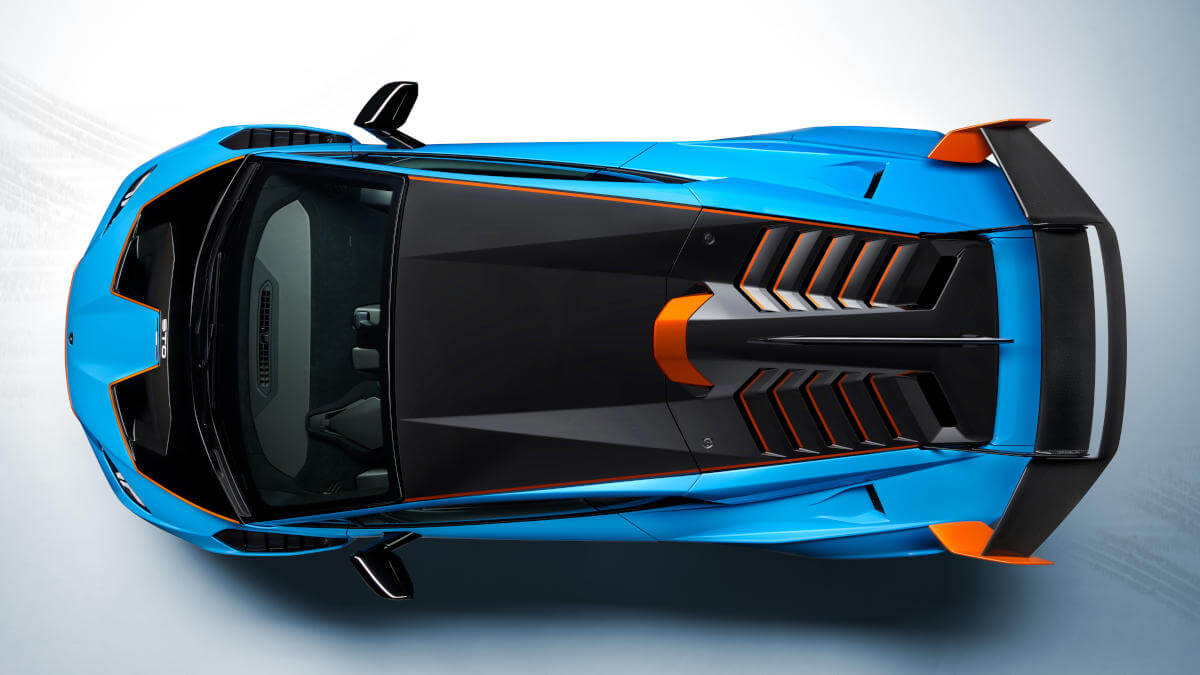



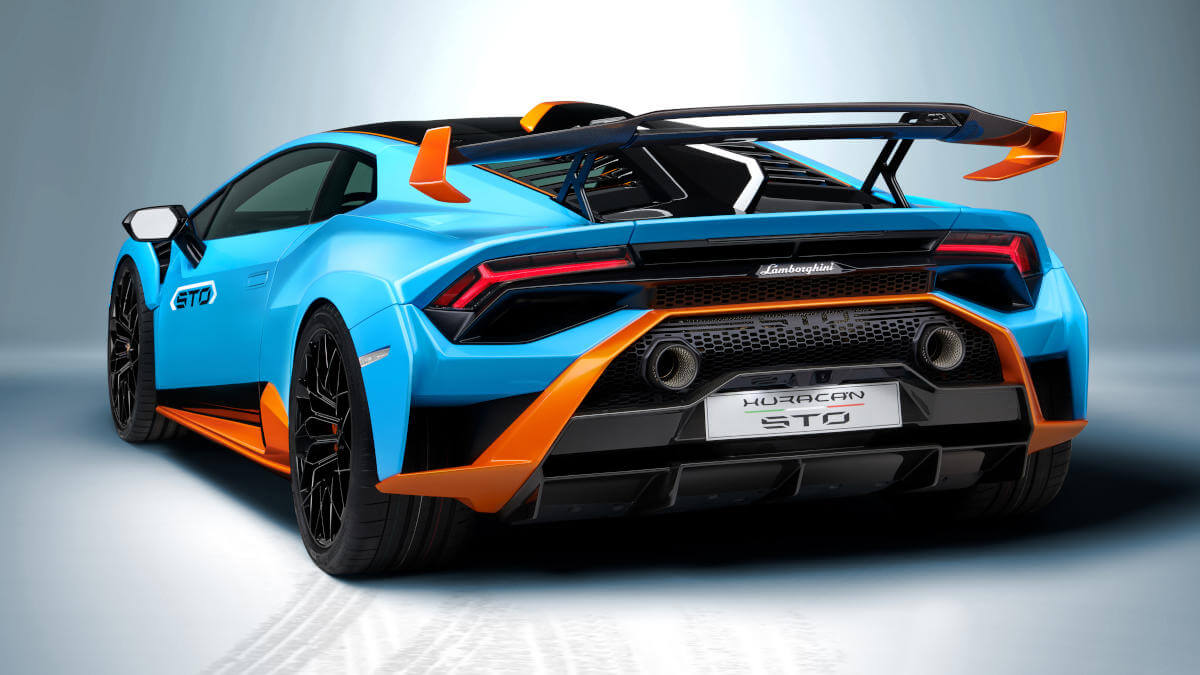



































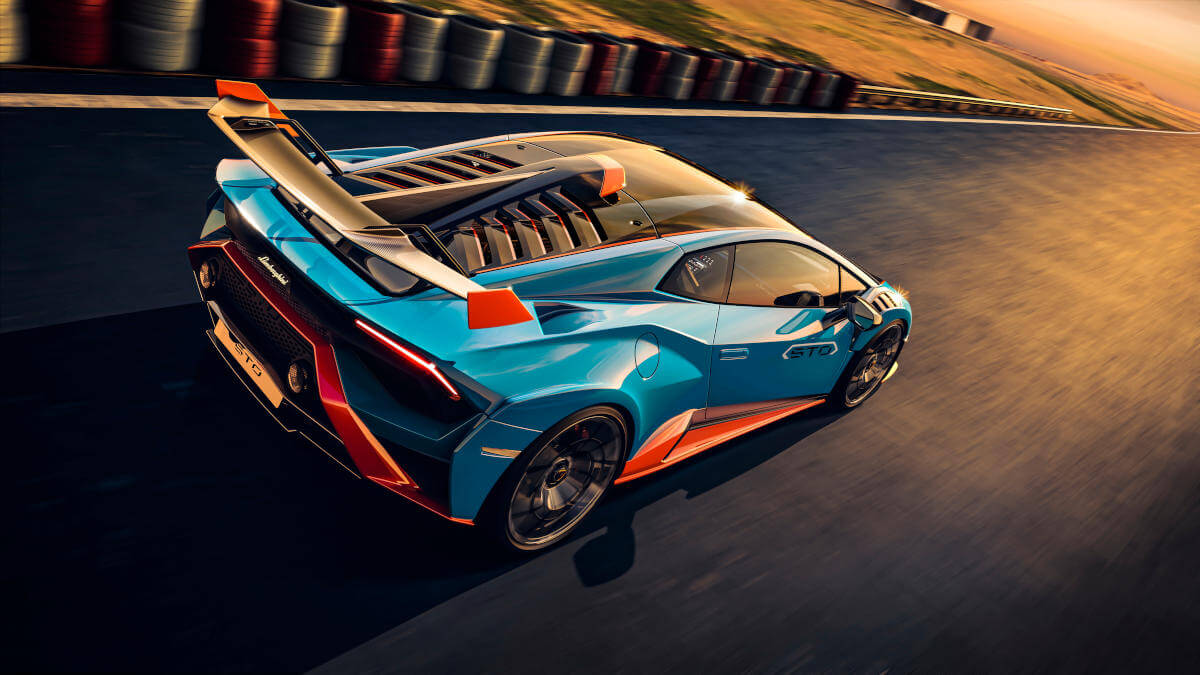



Although many of the tires look like the normal Huracán, Lamborghini developed completely new aerodynamics for the Huracán STO. Here, a particularly large number of technology transfers from motorsport took place. This resulted in a detail that no Lamborghini street sports car has had since the legendary Miura: the entire front including the upper part of the fenders can be opened forward. This component was given the artificial name ‘Cofango’ as a composition of the Italian words ‘Cofano’ (hood) and ‘Parafango’ (fender). In addition to faster access to the front chassis components, this also saves weight. In addition, new air ducts to the central radiator and out of the hood could be integrated, which not only provide more cooling but also more downforce. In the lower area, the front splitter directs air along the fully covered underbody to the diffuser.
Sophisticated aerodynamics
Thanks to its special design, the Cofango directs the airstream directly onto the fenders, which are equipped with air slits. The front wheel arches are vented through these slits and the negative pressure generated by the airstream, which increases the downforce. Newly designed rear fenders are also used, the shape of which was adopted from the Huracán Super Trofeo Evo. NACA air inlets are integrated in the upper section, which supply fresh air to the engine intake. Between these inlets is the completely new hood including air scoop and air fin, which ends just before the rear wing. This wing has a triple adjustable lower spoiler blade. Over 75 percent of all body parts are made of carbon fiber. The windshield is also 20 percent lighter than in the rest of the series. Thus Lamborghini reduced the weight by 43 kilograms compared to the Huracán Perfomante to now 1,339 kilograms.




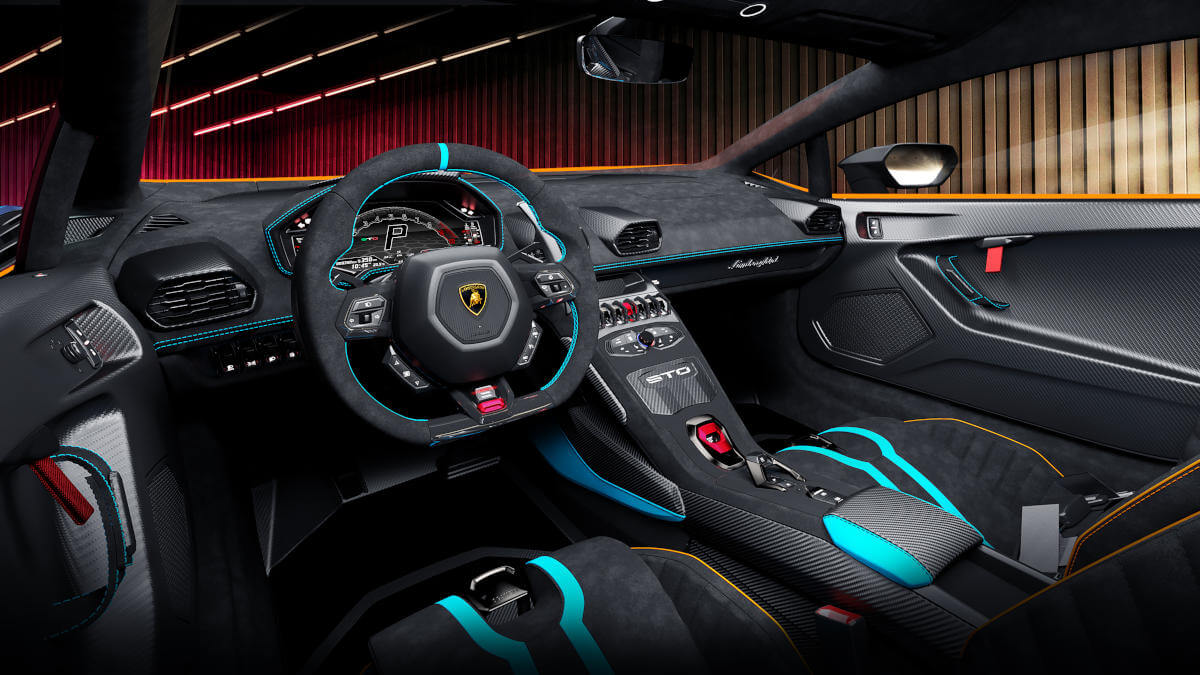











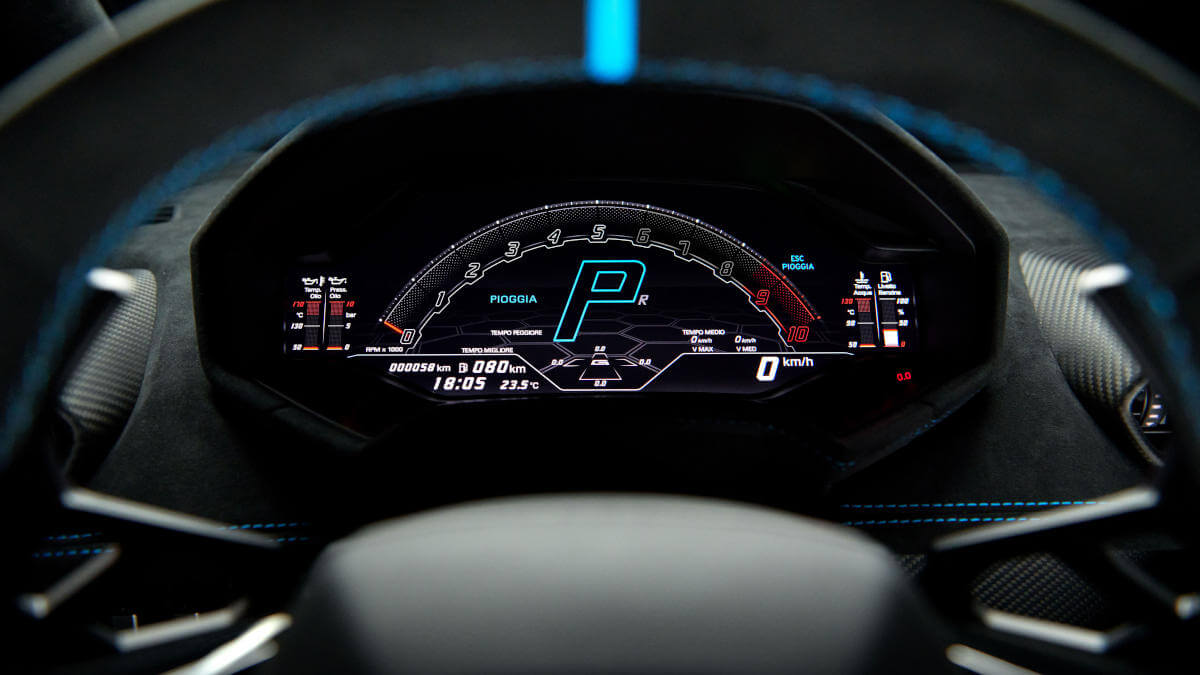



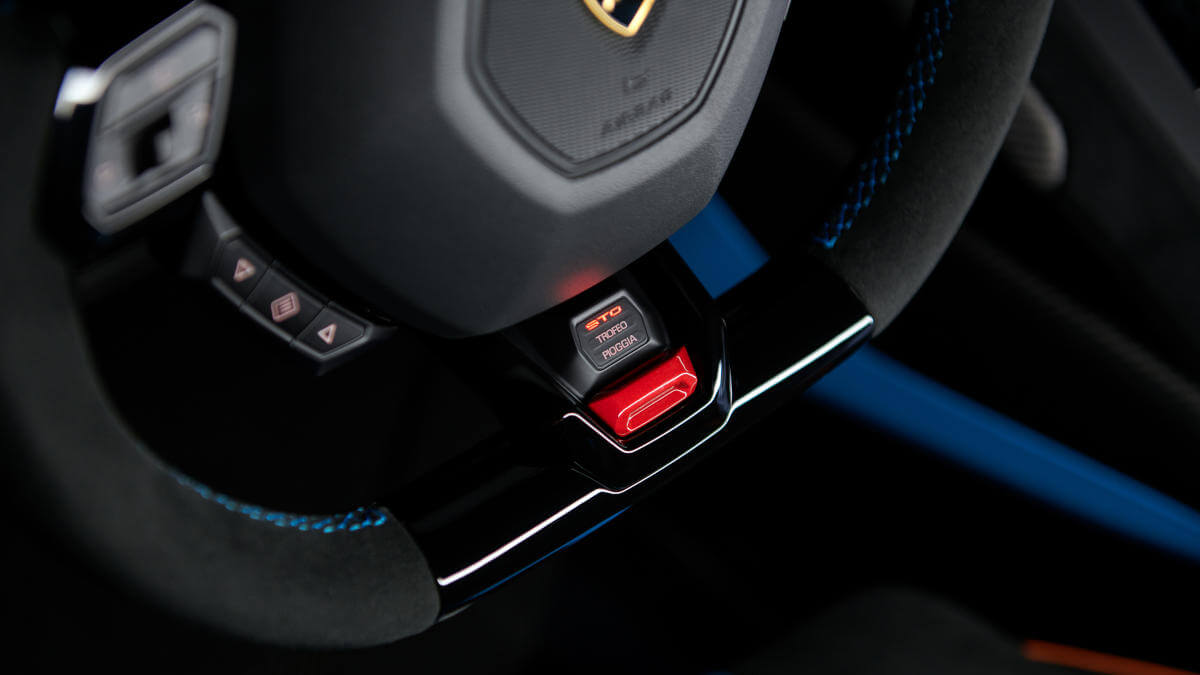







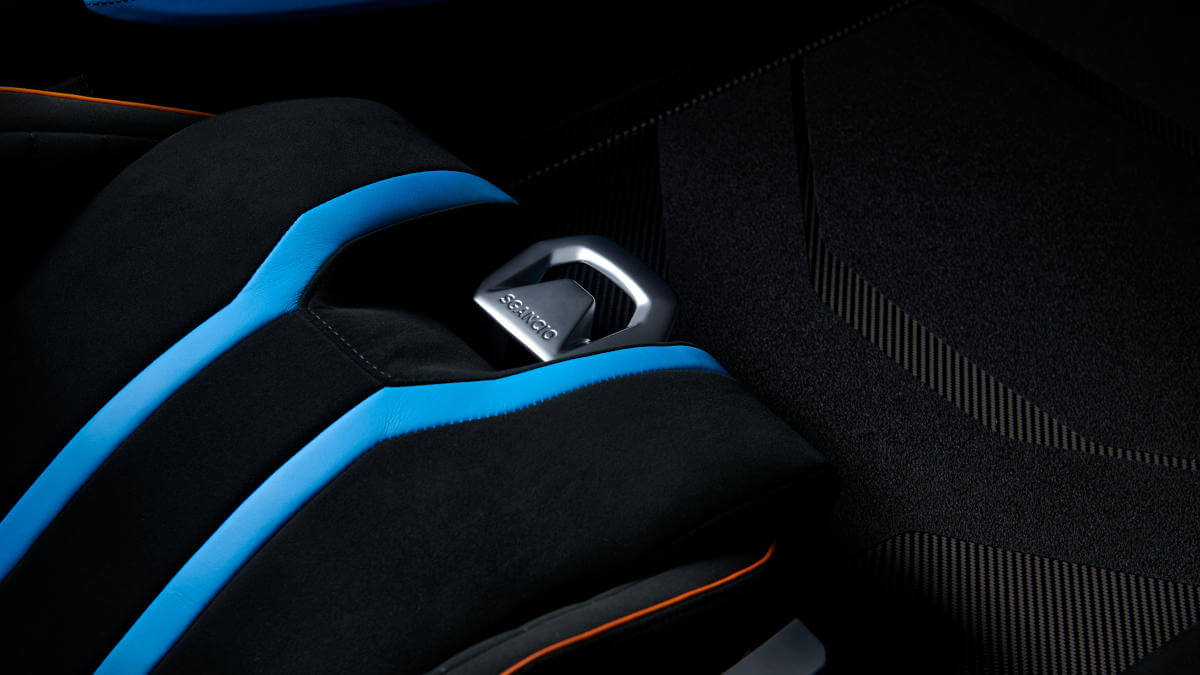



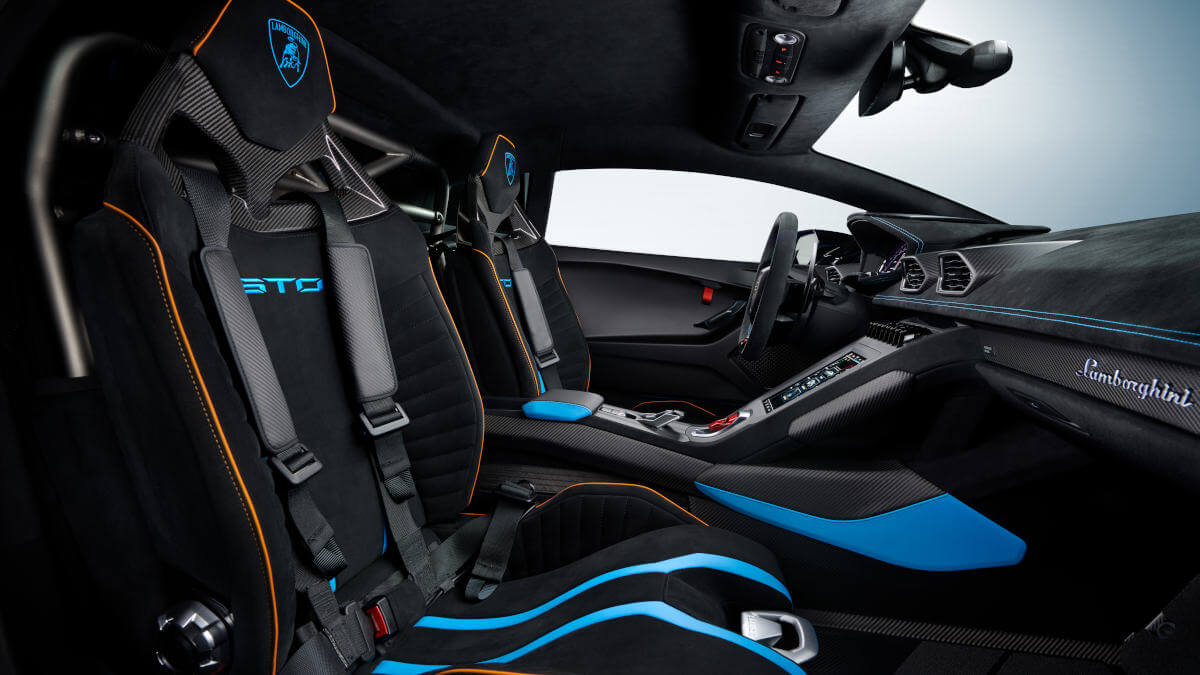



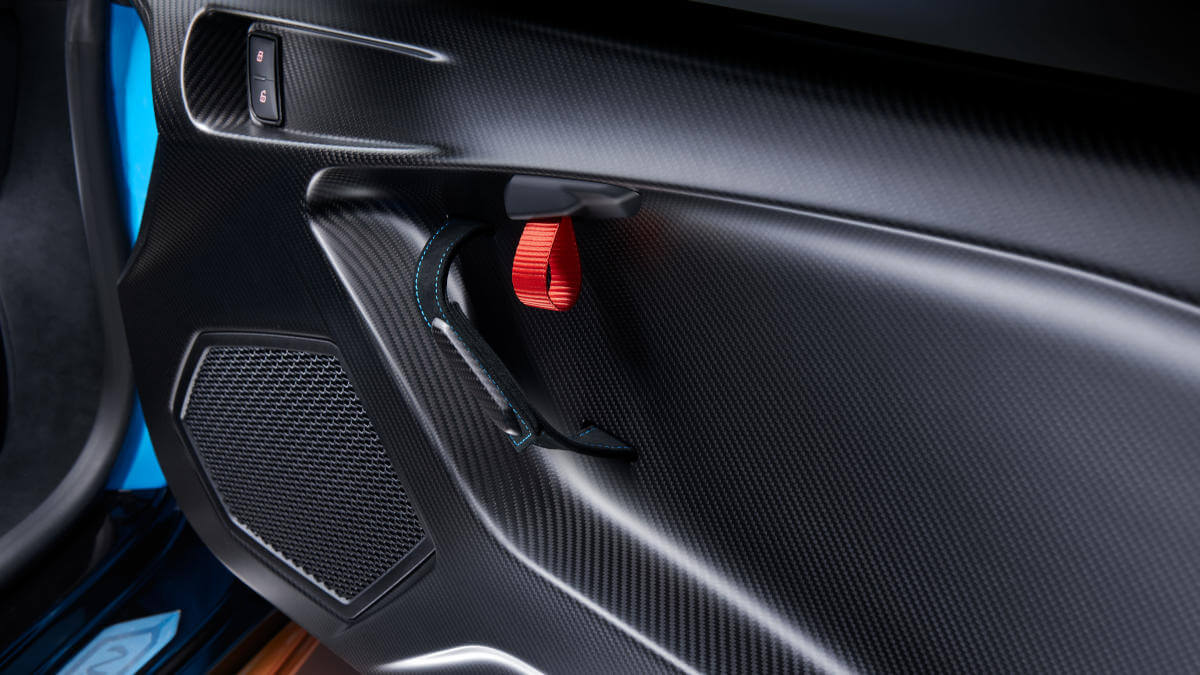











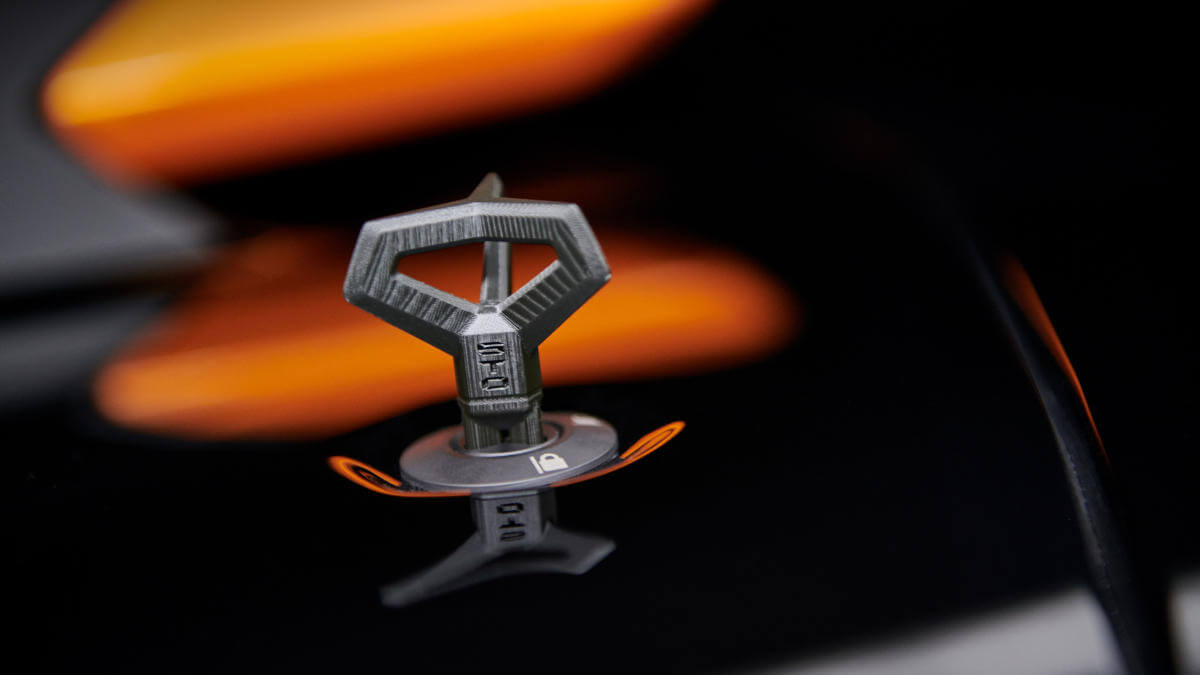











The ANIMA system’s driving modes can be adjusted via a switch on the lower steering wheel spoke. The Huracán STO has three independent driving modes: ‘STO’, ‘Trofeo’ and ‘Pioggia’. The latter is intended for riding in wet conditions. The STO mode is designed for use on public roads and the Trofeo mode for laps on dry, closed racing circuits. In collaboration with Brembo, a new carbon-ceramic brake system (CCM-R) with four times the thermal conductivity of the previous carbon brake was developed. At the same time, braking performance (25%) and stress resistance (60%) are increased, while longitudinal deceleration has been reduced by around 7%.
Special helmet compartment included
Driver and co-driver take their seats in a tailor-made cockpit. This consistently reflects the lightweight design approach of the body. In addition to decorative trim in visible carbon fiber, sports seats with carbon shells are also used. Lamborghini mixes Alcantara and Carbonskin as upholstery materials. Instead of carpets there are aluminium or, for an additional charge, carbon floor mats. Four-point belts can be attached to the titanium rollcage. The titanium alloy for the cage was developed in cooperation with Akrapovič, who also manufacture the exhaust system. Instead of door openers there are red loops in the carbon door panels. Between the air ducts under the front hood there is a special helmet storage compartment. The body and interior can be customized in colors beyond the normal program by asking the Ad Personam department. The base price in Europe is 249,412 €. In the UK it is 216,677 GBP and in the USA $327,838 (each time plus local taxes).
Images: Lamborghini




